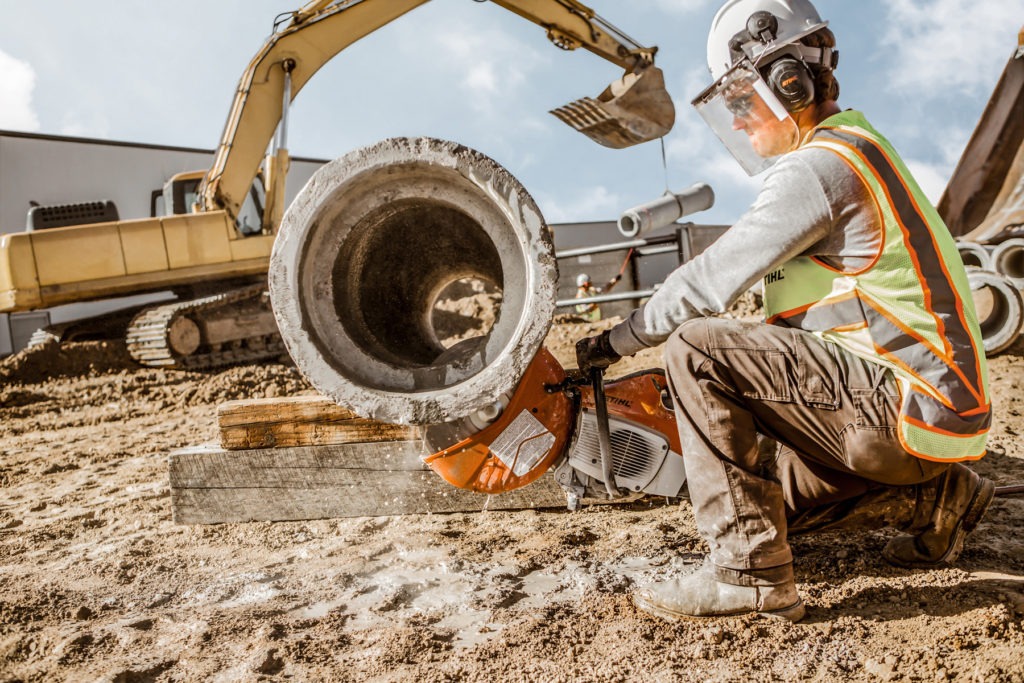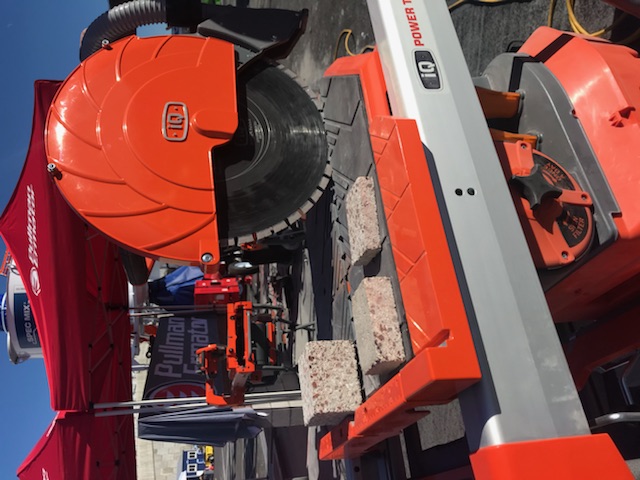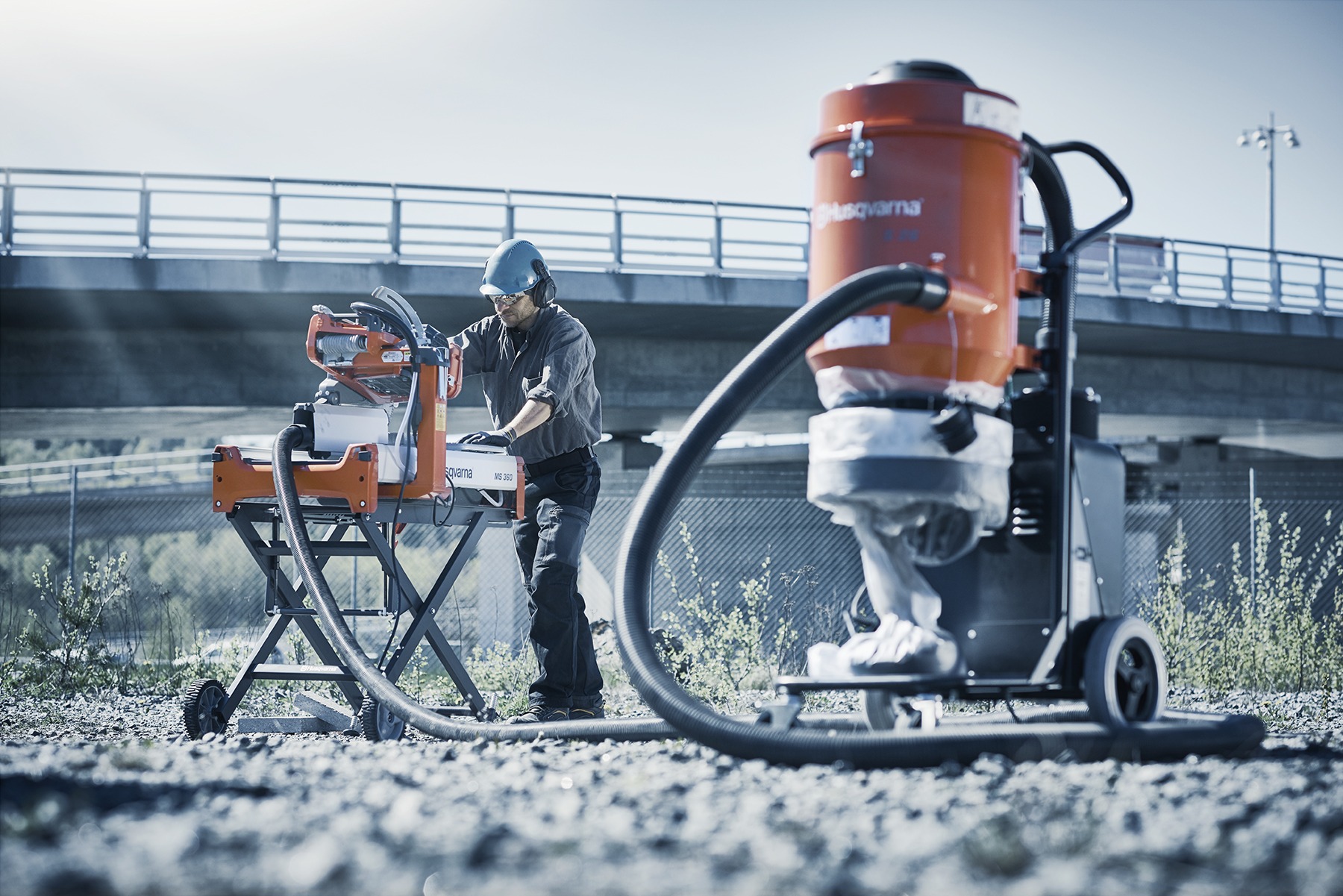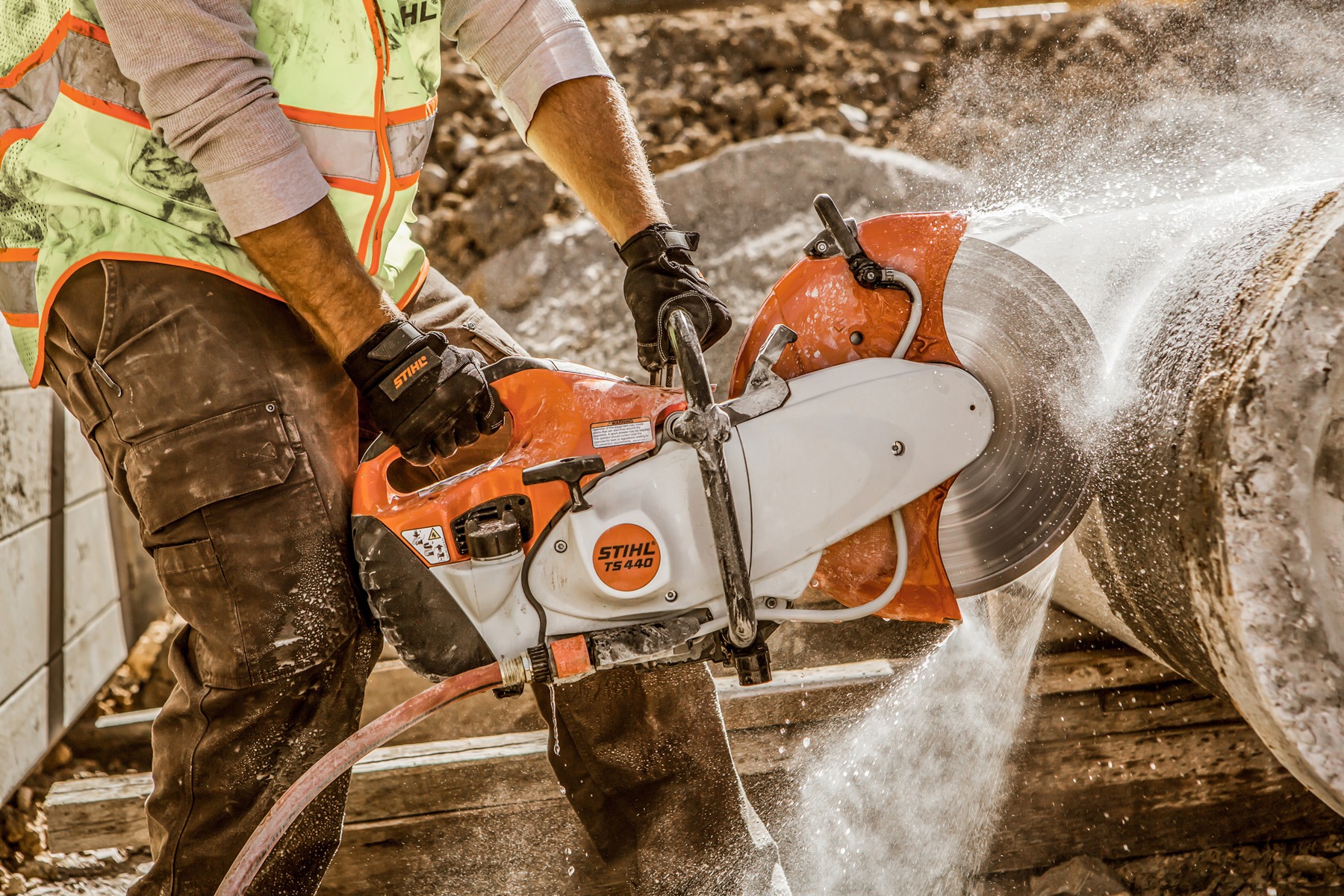It’s impossible to put a price on a good, faithful dog. Or a good, faithful friend. Or one of your fingers or an eye or a hand. Workman’s comp has developed some formulas for the value of a finger, eye and hand, but no one wants that money in exchange for any one of those things.
Leaving the grim saw accident and ER visit statistics behind and seriously focusing on masonry saw safety bodes well for preserving those body parts and more. There are many safety measures in every equipment manual. OSHA and other organizations have compiled copious safety rules, regulations and documents. Employers are required to provide some measure of personal protective equipment (PPE) depending on the industry, kind of work and other factors.
But deliberate, safe performance with power saws begins with personal responsibility and the attitude, alertness, training and vigilance of the user.
- Attitude needs to be respectful of the danger that power saws represent along with appreciation for their value in speed and efficiency to get a job done.
- Alertness contributes positively to any saw operation by being well-rested without distraction, hangover or drowsiness from medicine or lack of sleep.
- Training is imperative on every power saw, and this includes reading the entire operations manual and being shown how to check, prep, operate and shut down the equipment before using it.
- Vigilance is being aware of the near environment and totally attentive to the task at hand.
Concurrence comes from industry professionals like Product Manager Thomas Techow with Stihl, Inc. “Prior to operating any cut-off machine or concrete cutter, STIHL recommends that users review their product instruction manual, which can also be found on our website, to become familiar with the product features and safety information.”
Equipment
The safety checklist for masonry saw equipment is much the same as for all power saws:
- Fitted with proper blade
- Blade is sharp, not dull
- Cord not worn or broken; ground pin exists on plug
- Water pump connected, tank full, valve in line with water flow if wet sawing
- Belts, motor, etc., in good condition
- Guard rails properly positioned
- Conveyor free of obstacles or debris
- Saw support on level, stable ground, wheels locked; using a hand-held circular saw, it’s important that the user is on stable ground and in a solidly supported body position.
According to Husqvarna [and every other saw manufacturer]: “Protecting operators and the surrounding environment from airborne dust is one of the biggest safety concerns facing contactors today due to OSHA’s new silica regulations. Silica particles are a severe health hazard and containing dust is now a mandatory part of every contractor’s workday. When dry cutting bricks and blocks, dust can fly everywhere.”
That is one major reason that Husqvarna has developed a new dry cutting vac attachment for its popular MS 360 and MG 360 G masonry saws. The MS 360 vac attachment enables dust to be collected the moment it is created and pulled into a vacuum, creating a cleaner work environment. “Our MS 360 and MS 360 G are highly efficient machines for cutting bricks and blocks, outdoors as well as indoors,” says Jamie Krueger, Product Manager for Masonry Equipment. “The addition of the vac attachment makes it possible to cut dry. It is easy to install and once attached, it can stay on the saw all the time. It is also simple to use and as effective as possible when collecting dust.”
The ease of this Husqvarna accessory is affixing it to the conveyor cart by lining up two pins to two holes on the conveyor cart. A dust trough fits in the groove on the cart to catch and easily remove dust produced while cutting. “It almost completely surrounds the blade,” Krueger continues, “and can be adjusted for different material sizes. Once attached to the conveyor cart, the MS 360 vac attachment is then connected to a 250 CFM or more vacuum equipped with a HEPA filter, such as the Husqvarna S 26 or S 36 to help meet OSHA silica regulations.”
Techow recommends that users comply with the silica rule by connecting their machines to a water supply when in use. “All STIHL cut-off machines are equipped with an integrated water system for dust suppression and efficient water flow adjustment while cutting,” he explains. “That said, we still encourage customers to review their instruction manuals for good working techniques and for a better understanding of features and respiratory protection to reduce exposure.”
Wet cutting is a sure way to reduce silica dust, but it has its own safety precautions since water and electricity are not exactly compatible elements. Norton, a brand of Stain-Gobain, is based in Worcester, Mass., and brings extensive experience to its products, including masonry saws and blades, along with this advice:
- Prepare water supply.
- Install water curtain on cutting head pivot bar.
- Be sure water pump is plugged into connection on masonry saw motor and it will start when the main switch is turned on.
- Handle on small valve should be positioned in line with water flow.
- Start motor and be sure both sides of blade are getting adequate water.
- At all times, make sure water level covers screen at bottom of the pump.
- Do not let sludge or dirt get deep enough in the pan to block the pump inlet.
[www.nortonabrasives.com]
A saw guard or blade cover is an integral part of the equipment to prevent those precious fingers from encountering a spinning blade, as well as keeping small chips from becoming flying missiles. As technology evolves, Stihl product developers continue to create innovative cutting solutions while keeping safety as a top priority.
“Our latest cutting solution, the TS 440 STIHL Cutquik®cut-off machine, features expanded guard adjustability made possible by the world’s first sensor-activated STIHL Quickstop™wheel brake technology — capable of stopping the rotation of the cutting wheel in fractions of a second if kickback occurs,” states Techow. “This technology allows easier access for cutting pipes and other objects in trenches, cutting in corners, finishing cuts in walls, and making cuts in any circumstance where the guard on a traditional machine would limit access.”
Training is imperative for smooth, safe operation of any power equipment. Two of the most common scenarios for saw accidents, especially with circular saws, are kickback and lock-in. Kickback occurs when the blade jams or hits a foreign object and jumps back toward the user. It can happen, too, when the blade is being placed back into a partial cut.
Lock-in can move everything away from the operator when the blade jams in concrete or stone. Proper training on use of the saw, like making sure the blade is sharp and spinning at full capacity before beginning to cut, can reduce or even eliminate the chances of kickback and lock-in.
Personal Protection
While employers have some mandates on providing personal protection equipment (PPE), anyone with a full-time career or steady part-time work in stone masonry, on construction job sites or even cutting brick or concrete at home should invest in his/her own, well-fitting items like:
- Gloves
- Hard hat
- Respirator and filters
- Safety goggles or glasses with side shields
- Steel toe boots
- Snug work clothing
- Ear protection
- Brightly colored vest
- Long hair ties
Instruction manuals also contain guidance on personal protective equipment. “For example, we recommend that when using any STIHL Cutquik®cut-off machine, users wear work gloves, boots, goggles or protective glasses, a hard hat and ear protection,” Techow says, referring to what is also stated in its user’s manual.
And it bears repeating as many times as it takes to become embedded in the mind of a mason not to wear jewelry, open shirts, ball caps or other hats that can slide off in a sweat, tool belts, loose pants or non-secure eye glasses or sunglasses while operating any power saw. If you think it’ll never happen to you, ask someone who has been injured in a power saw accident if they thought it would ever happen to them. Few or none will say it was on their agenda.
Environment
The environment in which stone or brick cutting occurs can have a major impact on safety. Cars or trucks passing close by kicking up their own dust can be both a distraction and a danger. People milling around who are not professional construction workers can pose hazards unwittingly and may inhale silica dust. Nearby generators and other open equipment can be damaged with dust settling onto and into them.
Ideally, a power saw cutting stone should be 100 ft. from unprotected people and uncovered equipment. The operator’s feet should be on firm ground, and if it’s muddy, planks or boards should be placed under the saw and operator. Everyone using a saw should be cognizant of what is behind him or her, so there are no surprises while the machine is running. This includes loose dogs, kites, traffic, etc. — anything that could startle or interrupt the cutting task.
Leave taking chances to the card table or buying Monopoly property with your kids and grandkids. And keep in mind six of the many safety reminders pilots embrace before every flight:
- Shortcuts can be lethal.
- Only proficiency counts.
- Know your airplane [saw] ~ know it well!
- By controlling yourself, you can control the airplane [saw].
- Be the best you can be.
- As a pilot [stone mason], you don’t need to prove anything to anybody.
Words: Joanne M. Anderson
Photos: Husqvarna, iQ, Stihl
Joanne M. Anderson is a Southwest Virginia freelance writer and frequent contributor to Masonry Magazine and Mason Design Magazine. www.jmawriter.com



